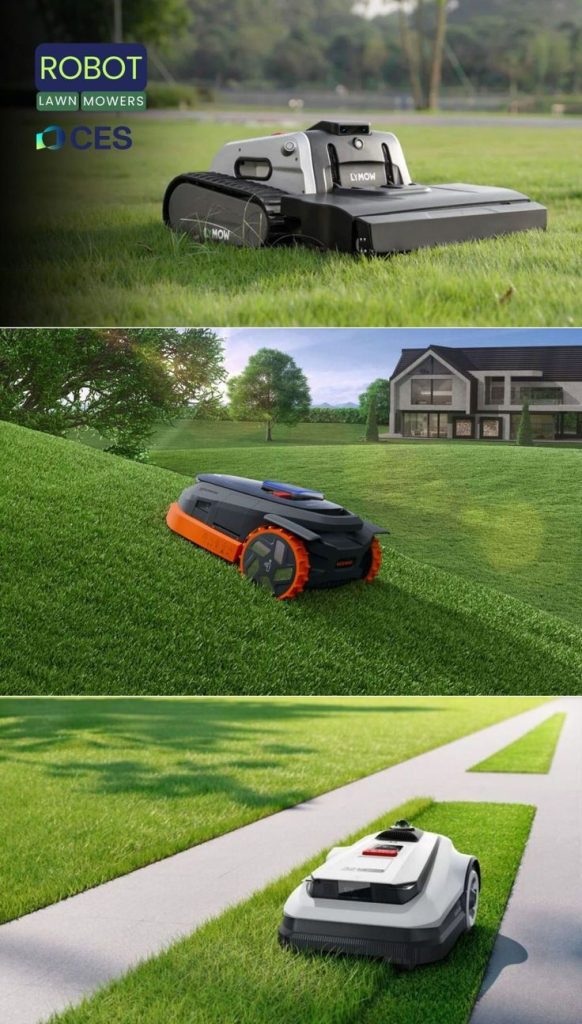An automatic grass cutting robot is a significant investment designed to provide effortless lawn care. To ensure its longevity, optimal performance, and continued efficiency, consistent year-round maintenance is crucial. Neglecting regular upkeep can lead to decreased cutting quality, frequent breakdowns, and a shorter lifespan for your robotic assistant. This guide outlines essential maintenance practices across the seasons to keep your auto mower running smoothly and your lawn looking pristine, year after year.
1. Spring Preparation: Waking Up Your Robot
As the weather warms and grass begins to grow, it’s time to prepare your robot mower for the active season.
- Thorough Cleaning: If stored for winter, give the mower a comprehensive clean. Remove any accumulated dirt, grass clippings, and debris from the chassis, wheels, and especially the cutting deck. Use a damp cloth and a soft brush; avoid high-pressure water jets on electronic components.
- Blade Inspection and Replacement: Install fresh, sharp blades. Dull blades tear grass, leading to an unhealthy appearance. Even if blades were new last fall, it’s best to start the season with a fresh set for optimal cutting.
- Battery Check: Ensure the battery is fully charged. If your model has a removable battery, check its terminals for corrosion. For integrated batteries, verify it holds a charge well.
- Boundary Wire Inspection (if applicable): Walk the perimeter of your lawn and inspect the boundary wire for any breaks, nicks, or exposed sections that might have occurred over winter due to frost heave, animal activity, or garden work. Repair any damage promptly with a wire repair kit.
- Charging Station Check: Ensure the charging station is clean, securely placed, and its power connection is intact. Clean the charging contacts on both the station and the mower.
- Software Update: Check your mower’s app or manufacturer’s website for any available software updates and install them.
2. Summer Maintenance: Active Season Care
During the peak growing season, your robot mower will be working hard, requiring more frequent attention.
- Regular Cleaning: After each mowing session, or at least a few times a week, quickly brush off loose grass clippings from the top, sides, and especially the underside of the cutting deck. This prevents buildup that can affect cutting quality and sensor performance.
- Blade Checks: Inspect blades weekly for sharpness and damage. Replace them as needed, typically every 1-3 months depending on grass type and lawn debris. Keep spare blades on hand.
- Wheel and Sensor Cleaning: Periodically clean grass and debris from the wheels and any visible sensors (e.g., ultrasonic, vision sensors) to ensure proper navigation and obstacle avoidance.
- Monitor Performance: Pay attention to how the mower is cutting and navigating. Any unusual behavior (getting stuck more often, uneven cuts) could indicate a need for cleaning, blade replacement, or a boundary wire issue.
- Adjust Schedule: Adapt your mowing schedule based on grass growth. During periods of rapid growth, you might increase mowing frequency.
3. Autumn Care: Preparing for Slower Growth
As temperatures drop and grass growth slows, your maintenance routine should adapt.
- Reduce Mowing Frequency: Adjust your mowing schedule to less frequent cuts as the grass growth naturally diminishes.
- Final Lower Cut (Optional): Some experts recommend a slightly lower final cut before winter, but consult your specific grass type and mower’s guidelines.
- Thorough Cleaning: Before the first frost, give the mower a very thorough cleaning, removing all accumulated grass and debris. This is crucial before storage.
- Blade Replacement: Replace blades at the end of the season, even if they seem okay, to ensure the mower is ready for storage.
4. Winter Storage: Protecting Your Investment
Proper winterization is vital for protecting your automatic grass cutting robot from harsh winter conditions and ensuring it’s ready for spring.
- Charge Fully: Ensure the mower’s battery is fully charged before storing it. For models with removable batteries, follow manufacturer guidelines for storage (some recommend storing partially charged).
- Clean Thoroughly: A final, meticulous cleaning is essential. Remove all grass, dirt, and debris.
- Store Indoors: Store the mower and its charging station indoors in a dry, frost-free environment. A garage, shed, or basement is ideal. Avoid extreme temperature fluctuations.
- Disconnect Boundary Wire (if applicable): Disconnect the boundary and guide wires from the charging station. Protect the exposed ends from moisture.
- Professional Service (Optional): Consider having your mower professionally serviced before winter storage. Technicians can perform diagnostics, clean internal components, and update firmware, ensuring it’s in top condition for the next season.
By adhering to this year-round maintenance schedule, you’ll maximize the lifespan and efficiency of your automatic grass cutting robot, ensuring it continues to provide you with a beautifully maintained lawn for many years to come.


